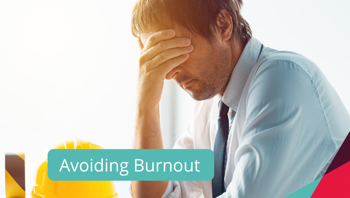
One of the biggest emerging risks is protecting staff working from home against job burnout. This is the point at which the healthy pressure we feel at work develops into chronic stress, exhaustion and disengagement, or even physical symptoms like migraines or trouble sleeping.
Prevention is always better than cure, and HR and health and safety managers should stay alert to these three telltale signs that could indicate a member of staff is on the path to burnout.
Working outside of normal hours
Whereas some people prefer to work earlier or later, if you notice a member of staff sending late emails on a regular basis or find out they’re skipping lunch to get things done then it might be time to check in for a wellbeing catch-up.
The danger with employees that find themselves working free from interruptions is that they often forget to interrupt themselves. With a central office, it’s also easier for employees to de-stress and leave their work challenges at the door when they come home. That period of downtime is actually healthy and conducive to more sustainable long-term performance, and it should be no different for remote workers.
Not taking annual leave
Findings from online jobs listing website Monster show that 42% of employees working from home are not planning to take time off from work any time soon. Job uncertainty and ‘presenteeism’ are the big drivers behind this, with people keen to show utmost dedication to their role, particularly if they feel their position might be at risk.
Everybody needs downtime from work to come back feeling refreshed, which is why health and safety managers should make a point of reviewing holiday bookings and self-service platforms from time to time to make sure employees are benefiting from their annual leave allocation.
Drop in engagement or performance
Perhaps the biggest indication that a work-from-home employee is suffering from the early stages of burnout is a noticeable change in their attitude, or a drop in their usual standard of work. Social isolation, extra workload or additional pressures at home could be playing a part in this, so it’s crucial to get to the root of the problem quickly.
Again, being able to hold regular catch-up meetings or video calls with remote staff is the best way for employers to make sure everything is okay with their workload and that they aren’t missing the support or resources they need.
Are you giving your people the right support to manage burnout?
Organisations that aim to nip chronic stress and burnout in the bud as soon as the early signs appear need to provide specialist training courses and tools for both managers and employees.
This is a great signal for the type of culture within your business and makes it clear to people that it’s completely fine to reach out for support when the pressure of work is getting too much.
Our Mental Health and Wellbeing eLearning catalogue offers online training content for management and employees to help promote greater mental wellbeing and support in your organisation.
Alternatively, you can speak to an expert or schedule a live demo to find out how our eLearning content can transform L&D in your organisation and help you stay on top of mental health and wellbeing.
Build a case for Employee Wellbeing
Our guide helps create and implement a health and wellbeing plan in your organisation.

 AU & NZ
AU & NZ
 SG
SG
 MY
MY
 US
US
 IE
IE